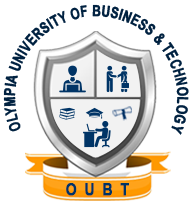

Olympia University of Business & Technology
SYLLABUS
CS-.NET-101: .NET Programming
.NET Classes Starting March 24th, 2018
Location: Lacey, Tacoma & Bellevue.
Faculty: SAM for Lacey Location and Todd Nelson for Bellevue Location.
COURSE DESCRIPTION
.NET Development is a course designed to teach students the fundamentals of software development in the Microsoft .NET Framework environment and to educate students on processes and methodologies that are employed in the Software Development Lifecycle (SDLC).
Students will also learn about common business scenarios and gain familiarity with roles encountered in a professional environment.

Olympia University of Business & Technology
PREREQUISITES
Recommended - Although not required, it is strongly recommended that students entering this course have familiarity with code structure and/or writing code within a code editor.
Recommended - The recommended code editor that will be used in this course is Microsoft’s Visual Studio 2017.

Olympia University of Business & Technology
GOALS AND OBJECTIVE
 Students who enroll in this course will be taught the basic skills of writing software applications using the C# programming language, JavaScript, Hypertext Markup Language(HTML), and Transact-Structured Query Language(TSQL) among others
Students who enroll in this course will be taught the basic skills of writing software applications using the C# programming language, JavaScript, Hypertext Markup Language(HTML), and Transact-Structured Query Language(TSQL) among others  Upon completion of the course, students will have the necessary knowledge to pass one of the Microsoft Technology Associate (MTA) exams to obtain entry level certification.
Upon completion of the course, students will have the necessary knowledge to pass one of the Microsoft Technology Associate (MTA) exams to obtain entry level certification.  Additionally, students will have enough information to give them a head start in obtaining the next level of certification and technical skillset to obtain an entry-level position or internship.
Additionally, students will have enough information to give them a head start in obtaining the next level of certification and technical skillset to obtain an entry-level position or internship.

MATERIALS NEEDED
Laptop - recommended system requirements
 Windows 10 version 1507 or higher: Home, Professional, Education, and Enterprise
Windows 10 version 1507 or higher: Home, Professional, Education, and Enterprise 1.8 GHz CPU or faster processor.
1.8 GHz CPU or faster processor. 4GB-16GB of RAM
4GB-16GB of RAM 500GB+ SSD
500GB+ SSD Video card that supports a minimum display resolution of 720p (1280 by 720); Visual Studio will work best at a resolution of WXGA (1366 by 768) or higher
Video card that supports a minimum display resolution of 720p (1280 by 720); Visual Studio will work best at a resolution of WXGA (1366 by 768) or higher

Olympia University of Business & Technology
COURSE OVERVIEW
Students will be introduced to Microsoft’s .NET Framework development environment and learn how to design and build various types of .NET applications.
They will first learn how to use the latest Microsoft integrated development environment (IDE), Visual Studio 2017, to develop simple console applications.
Students will then progress to web development and design and build their own web site.
Students will learn how to connect their web site to a SQL Server database and learn how to securely store their code using a source control repository.

Olympia University of Business & Technology
COURSE DETAILS/OUTLINE
| Intro to Visual Studio |
|
|---|---|
| Source Control |
|
| Creating Applications |
|
| Programming Basics |
|
| Object Oriented Design |
|
| LINQ |
|
| Error Handling |
|
| Unit Testing |
|
| Design Patterns |
|
| Intro to SQL Server Developer |
|
| Web Development |
|
| Debugging Web Applications |
|
| Intro to Internet Information Services Manager(IIS) |
|
| Data Driven Application |
|
| JavaScript |
|
| Overiew on |
|

Olympia University of Business & Technology
HOMEWORK
Homework will be assigned on a weekly basis and due within five days of the day of instruction to allow the instructor ample time to review the students work.

Olympia University of Business & Technology
DISCLAIMER
The instructor reserves the right to make modifications to this information throughout the length of the course.
For up-to-date course requirements, readings, assignments,
and announcements,
please refer to the course website.
IT IS YOUR RESPONSIBILITY TO CHECK


